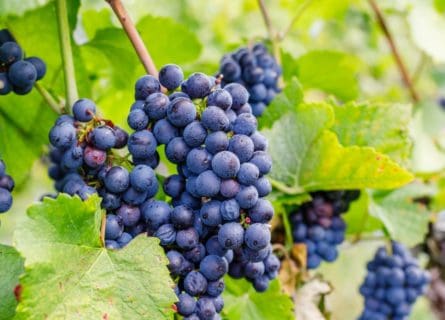
Dijon Travel Guide
Experience Dijon: Where History, Culture, and Culinary Excellence Converge in the Heart of Burgundy
Dijon represents the very best of the Burgundy region; stunning architecture, a fascinating historical legacy, a vibrant food & wine scene, and much more. Moreover, the city is ideally situated for just about everything. In essence, the majestic French Alps are not far, and the legendary vineyards of Romanee Conti and Chambertin can easily be visited within a day.
Any visitor to Dijon’s beautiful historical center today will encounter a feast of architectural splendor – a legacy of the Dukes of Burgundy, whose history we will come to shortly. It vies with Beaune for the title of capital of Burgundy and boasts a rich cultural life and a renowned university. So it perhaps fits that Dijon enjoys a long and complicated history, which according to historians, dates back to the Neolithic period when nomadic tribes settled in this part of eastern France.
However, the city’s official history began after the Romans invaded France – formerly known as Gaul – in the last century BC. The Romans established a small settlement called Divio, which was strategically situated on the road between Lyon and Paris. Such a fortuitous location meant that Divio rapidly grew in both size and importance and drew in increasing numbers of traveling merchants and traders who added to the settlement’s prosperity. Exotic goods such as spices, tin, amber, and pewter were all available at a price, of course! Divio’s influence continued growing as Burgundy’s former capital.
Divio, incidentally meaning sacred fountain, now stood in direct competition with Beaune further south, another important capital for local trade and commerce. However, as Beaune was situated in the heartland of wine production, whereas Dijon was just north of what we know today as the start of the Côte d’Or, it naturally evolved into the official administrative rather than wine capital of the region in the 5th century. In the Middle Ages, the local patron saint, known as Saint Benignus, introduced Christianity to the area, and the town became an important stop for pilgrims on their way to Rome.
During this period, the Church’s association with wine growing became established. The vineyards of the Côte d’Or, which today are a mere 25-minute car journey away, were tended to by local monks; the region was the seat of many important churches and monasteries, and red wine has an obvious significance in Christianity as the blood of Christ. The relationship officially began in 587 AD, when King Guntram donated the first vineyard to the Church. This precedent by Guntram became common practice during the reign of Charlemagne, and the Church slowly assumed key responsibility for tending Burgundy’s vines and the winemaking.
The Benedictine monks became sole guardians of the priceless vineyards of Le Musigny and La Tache; one of their most notable achievements was the creation of the Abbey of Cluny in 910. The monks planted an extensive vineyard surrounding the Monastery; their neighbors, the Cistercians, also founded an Abbey called Citeaux in 1098. The latter would become famous for hosting Burgundy’s famous vineyard, the Clos de Vougeot, in 1336. Indeed, Burgundy connoisseurs owe a considerable debt to the Cistercian monks, for they were responsible for developing the first understanding of the concept of terroir and the idea that different sites will produce different quality wines. This laid the foundation for the classification of Burgundy’s Crus or ‘climats’ into Grand Cru, Premier Cru, and Village wines centuries later.
However, despite its positive legacy and influence, the Church’s control over the wines of Burgundy was not to last. In the 11th century, the province of Dijon became home to the Dukes of Burgundy, turning the town into an important center of wealth and power in medieval France. Between the 14th and 15th centuries, a new golden age and unprecedented era of prosperity descended upon the town, spearheaded by the legendary Duchy of Burgundy. A succession of great leaders – Philippe-le-Hardi (Philip the Bold), Jean-sans-Peur (John the Fearless), and Philippe-le-Bon (Philip the Good) – built up one of the most powerful states in Europe, which included parts of Holland, West Germany, and Belgium. From the time of Phillipe, the Bold (1342 – 1404), Dijon became a major center of art and chivalry – Philippe was a significant patron of the arts, and so Gothic and early Renaissance music, painting, and sculpture filled the town. This wonderful Cultural Revolution attracted some of Belgium’s greatest and most famous artists and musicians and beyond.
But for the incumbent religious order, this era of prosperity would have its downside. As the Dukes consolidated their control, they gradually took the vineyards from the Church and placed them under noble rule. Keen to protect the region’s precious vines and the wonderful elixir they yielded, Duke Phillipe Le Hardi issued a decree concerned with safeguarding the quality and reputation of Burgundy’s wines. He also pushed Beaujolais’s Gamay grape further south by prohibiting plantings in the Côte d’Or. Henceforth, Chardonnay and Pinot Noir would be the two mainstays of the region. Over the coming decades, and particularly after Burgundy was incorporated into the unified Kingdom of France, the Church’s influence decreased again, and ultimately, their vineyards were confiscated and sold to the merchants of Beaune. An era had ended.
In the 16th century, Dijon’s importance waned somewhat following the demise of the Duchy of Burgundy. Swiss and Imperial armies took the town hostage in 1513, an episode that Dijon’s citizens would not quickly forget! The city then enjoyed more than a century of relative peace and prosperity until France was hit by the outbreak of the French Revolution in 1789. The city was again occupied, this time by anti-Napoleonic coalitions in 1814. The following 100 years would see a massive social upheaval across France, including the Monarchy’s return to power in the 19th century. In 1870, during the Franco-Prussian War, the city was taken by the Prussian army, who held control of Dijon until 1871. Fortunately, however, the city was largely spared the destruction of this terrible war, despite the city being occupied; the architecture of the 15th century, including the half-timbered houses, still largely remains.
Despite the terrible conflict of the Franco-Prussian War, France entered a Belle époque (beautiful age) at the end of the 19th century with the declaration of the Third French Republic in 1870. This era of prosperity, art, and culture helped fuel the demand for Burgundy’s wines, and it was during the century that Dijon became known for its most famous export – Dijon Mustard. In 1856, Jean Naigeon perfected the art of adding vinegar rather than unripe grape juice to his recipe, and Voila, Dijon Mustard was born.
The Second World War outbreak would directly affect Dijon’s citizens throughout the conflict. Nazi Germany took the city in 1940 and occupied Dijon until 1944 when the French resistance and army managed to liberate the city and drive the Nazis out of Burgundy. In the aftermath, many growers in the Côte d’Or returned home to find their land in a poor state. Unfortunately, they overcompensated with a program of extreme fertilization that lasted for decades and caused high yields and the wines’ reputation to fall. Thankfully, a new, younger firmament has restored Burgundy’s reputation fully, and now the finest wines are in high demand and short supply.
Today, Dijon is a confident, lively, and cosmopolitan city, with a surprising amount of cultural attractions and nightlife considering its relatively small size. It seduces all who visit, not least because traffic is severely restricted within the historic center, and so Dijon retains a relaxed, proud air. It is simply one of France’s most splendid and appealing cities, filled with the grand palaces of the old Burgundian aristocracy. So, if you love great food, lively nightlife, and fine wines on tap, you will love Dijon!
-

Djion Mustard Gastronomy & Wine
Dijon hosts one of France’s most important and lively food festivals annually. The gastronomic fair attracts hundreds of thousands of visitors and draws guests from across France and beyond in search of the finer things in life. As Dijon marks the start of the famous Côte d’Or region, great food and restaurants are understandably in abundant supply. It’s the home of the famous Dijon mustard and the liquor crème de cassis. Foodies must make a pilgrimage to the city’s fantastic food market, housed inside a glass and steel design masterpiece created by Gustave Eiffel of the Eiffel Tower fame.
Moreover, resident vignerons are known for being discerning customers, and eating badly in the city is very hard. Classic local dishes include Boeuf Bourguignon, Coq au vin, and Escargot de Bourgogne. Bresse poultry is another major highlight, like its divine Charolais beef. Dijon mustard is famous worldwide, and you can enjoy mustard tastings right in town at historic producers like Maille and Fallot.
Hungry visitors will find plenty of great cafes and bars dotted throughout the historic center, perfect for a relaxing cafe au lait. At the same time, you plan to enjoy a leisurely feast in one of Dijon’s award-winning restaurants. One of our personal favorites is Le Bistrot des Halles, near the market on Rue Bannelier—classic bistro-style dishes, great value, and not a hint of pretensions. The staff is super friendly and helpful, but make sure to book in advance on weekends. DZ ‘ Envies is another popular choice on the market square, with a keenly priced and delicious set lunch menu. More dressy and formal venues also abound; try Jean-Pierre Billoux for a real treat. Run by one of the most renowned chefs in Dijon, Jean-Pierre’s cooking effectively combines local ingredients with modern flavors to spectacular effect.
The region’s fine wines have inspired awe for centuries, so it will come as little surprise that the city’s wine lists are dominated by Burgundies of every conceivable denomination and price point. From the majestic wines of Domaine de la Romanée-Conti to humble Bourgogne Rouge, discerning wine lovers will find whatever they desire. In just over 20 minutes by car, you will arrive at the start of the Côte de Nuits, renowned for its structured, robust, and long-lived Pinot Noir, the most famous names being Vosne Romanée, Chambertin, and Clos de Vougeot.
Gastronomy Guide to the Cuisine of Burgundy: Read more
Nearby Wine Regions
-
 Discover the magic of Burgundy, where tradition meets innovation. Delve into complex terroirs and the flavors of Pinot Noir and Chardonnay. Plan your trip! Read more
Discover the magic of Burgundy, where tradition meets innovation. Delve into complex terroirs and the flavors of Pinot Noir and Chardonnay. Plan your trip! Read more
Highlights
-
Notre-Dame
One of the most splendid Churches in France, this magnificent 13th-century building, is best known for its gargoyles, and its Jacquemart clock. Fortune seekers should touch the sculpted owl (Chouette) on the north wall, which is meant to bring good luck.
-
Palais des Ducs
This is where the Dukes of Burgundy held court, although the building you see today was mainly constructed in the 17th century. It was the headquarters of the local parliament and remains a beautiful piece of architecture that houses an important museum collection, containing art and artifacts from Roman times to contemporary works.
-
Musee des Beaux Arts
A must-see attraction for any culture lover in Dijon, the city’s art museum is housed in the Palais des Ducs. It boasts a permanent exhibition of medieval art. But, it is most famous for its collection of Flemish masters, including the 14th-century triptych by Jacques de Baerze and Melchior Broederlam. There are also often contemporary exhibitions of current artists and works by Picasso, Monet, and Courbet. In the Guard Room, you will find the tombs of the famous Dukes of Burgundy.
-
Wine Tasting Tour of Burgundy
No wine lover in Dijon should leave without visiting at least one famous cellar in the neighboring Côte de Nuits. Chateau de la Tour is one of the most famous and historic properties in the region, with an excellent vineyard holding in the legendary Grand Cru of Clos Vougeot and a great first stop. Contact us for more information on personalized ultra-luxury wine tours in Burgundy.
Recommended for you
More information
If you would like us to customize an exclusive luxury tour, contact us and let us know your travel plans. We offer luxury food and wine tours for private groups of a mininium two guests. In addition, all of our private, chauffeured tours are available year-round upon request.














